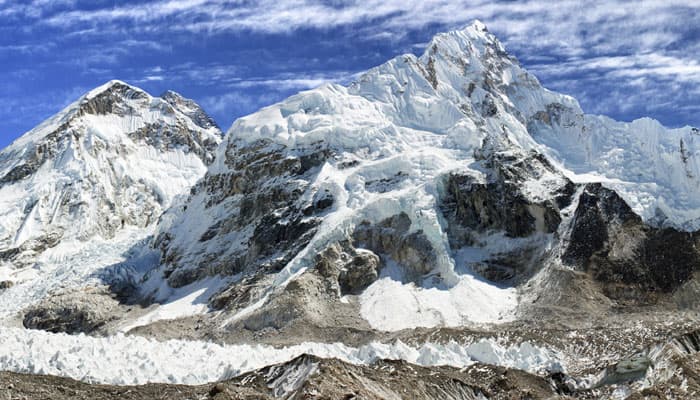Shimla: The glaciers in the Himalayas will continue to retreat for another 40-50 years and if this phenomenon is not checked, temperature will rise by at least four degrees Celsius by the end of this century.
This caution has been issued by Anil Kulkarni, a scientist with the Bangalore-based Indian Institute of Science, at a conference on Himalayan glaciology here Thursday.
"But everything is still not lost. It can be checked by policy interventions. The consistent receding of glaciers will be a big threat to the food security," he said.
Kulkarni said it was wrong to presume that all the glaciers will disappear by 2035. "The earlier studies which established this fact were not scientific."
"Seventy percent of water from the melting glaciers flows down to Pakistan and about 90 percent of the irrigation is done with this water."
"A small window of opportunity is still available to India and the world to save the situation (glacier receding). If we keep the level of glaciers to what existed in 1980s, it can possibly lead to their conservation," the scientist said.
He said, "It's a known phenomenon that the temperatures are rising and the precipitation is increasing. It needs to be studied how it would affect the availability of water in times to come."
The Himalayas are home to 10,000 glaciers, covering about 40,000 sq km area.
"Most of the glaciers are consistently receding but we have no idea about two places in India -- Karakoram and Arunachal Pradesh. Scientists and policy makers should sit together and look for solutions."
Studies conducted by Kulkarni said the formation of lakes with melting of glaciers is a new phenomenon and it is to be seen seriously.
"In the Himalayan region, 500 new lakes have been formed due to glacial melting."
Water management was the biggest challenge posed by melting of glaciers, said Tarun Shridhar, principal secretary of Himachal Pradesh's science and technology department.
"The Himalayan region is the most wasteful region compared to other parts of the globe when it comes to tapping water for future usage," he said.
"The government is watchful of the situation but the scientists need to tell the policy makers in simple terms what needs to be done to check consistent retreat of the glaciers," Shridhar said.
He said scientists should give evidence-based reports to the planners for intervention rather than just taking alarmist view.
The Himachal Pradesh Centre on Climate Change has been undertaking studies pertaining to the climate-induced hazard threats by monitoring the moraine-dammed glacial lakes in the high-altitude hills.
Moraine is a mass of rocks and sediment carried down and deposited by a glacier, which then blocks the glacier and creates a lake.
















